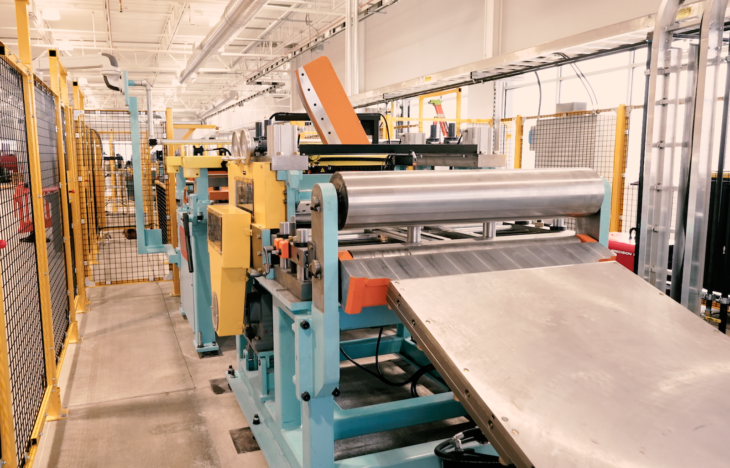Novelis Inc. started up a new roll forming development line at its automotive Customer Solution Center in Novi, a suburb of Detroit, MI. Novelis is the first flat-rolled aluminum company to invest in its own roll forming development line, which will enable the company to conduct research and development with the aim of meeting industry demand for large volumes of high-strength aluminum auto parts.
“The auto industry understands the benefits of aluminum and is looking to Novelis to develop technology that supports their growth initiatives,” said Jamie Zinser, vice president, Global Automotive, Novelis Inc. “One of these technologies is roll forming. We are introducing this development line to accelerate research and development, but not to become a roll forming company. Our goal is to work with our automotive and Tier I partners to innovate and develop aluminum sheet technology that will support the electrification movement.”
Roll Forming
As the automotive industry moves toward electrification, it is demanding faster production of lighter, greener parts. Offering a process that is scalable and customizable, aluminum roll forming could provide significant opportunities for production of high strength aluminum at scale. While roll forming is not new to the industry, most aluminum structural roll formed parts have been simple open sections, with extrusions being used to meet the need for complex, hollow aluminum parts. However, with advancements in aluminum alloy grades (such as Novelis’ proprietary Advanz™ line) and new welding technologies, the production of complex, roll formed parts could be viable (and potentially offer higher value than extrusions) for the right applications.
With the roll forming process, strips of aluminum are incrementally formed in a continuous fashion to form a desired shape with various degrees of detail and strength. The flat rolled material is fed into the line, where it is first processed in the pre-pierce press, which adds holes to the incoming strip in specified patterns, with the option to install fasteners. Embossments and cutting can also be performed in this pre-piercing stage.
The strip then enters the roll forming and in-line welding section of the line, where the strip is formed into complex, custom profiles of varying lengths (using tooling with a range of gauges and grades). Laser, high frequency induction, and rotary spot welding are then used to create closed profiles. The final step is the sweeping (cleaning) of the profile, along with cutting it to length.
Conclusion
Roll forming is a continuous or semi-continuous process, which is scalable based on the number of passes. As a result, the scope of the equipment can be tailored to the application. Roll formed profiles made from high strength aluminum are around 40% lighter than the steel equivalent. Many rocker reinforcements, cross members, and battery frames can be roll formed at a lower cost than other processes.
The installation of an in-house roll forming development line in Novi is a critical step in moving the technology forward. With this line, Novelis will be able to conduct full scope, year-round, in-house research to quickly prove the robustness of the roll forming process for the production of complex, high-strength aluminum profiles. The shift to the mass production of roll-formed components for aluminum-intensive vehicles is a natural next step as the industry prioritizes electrification and sustainability.
“Battery electric vehicle (BEV) architectures are utilizing more constant-section structural parts,” said Donald Whitacre, automotive technical director, Novelis North America. “The roll forming process makes these components quickly and robustly, and marrying high-strength aluminum sheet into this process offers fantastic value to OEMs working to simplify assembly while improving efficiency.”
Editor’s Note: This article first appeared in the June 2023 issue of Light Metal Age. To receive the current issue, please subscribe.

